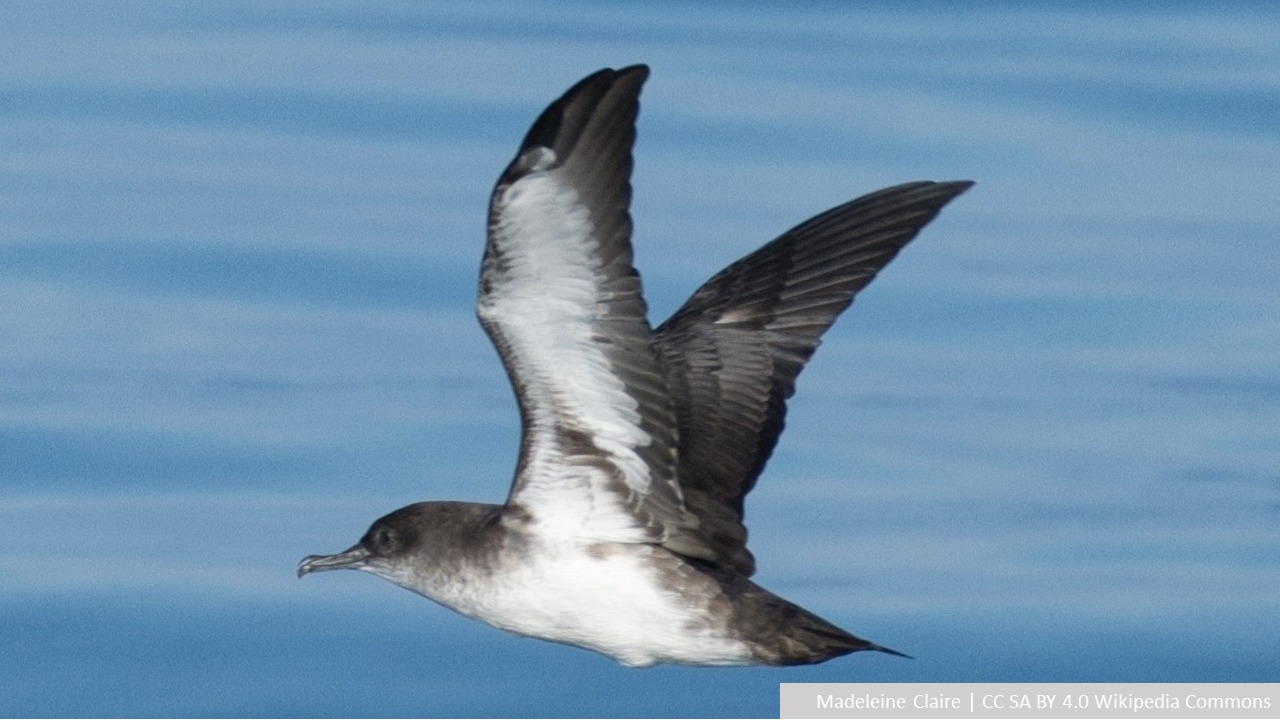
Black-vented Shearwater at sea, photograph by Madeleine Claire
Cecilia Soldatini (Centro de Investigación Científica y de Educación Superior de Ensenada, Unidad La Paz, Mexico) and colleagues have published in the journal Science of The Total Environment on the diving behaviour of the Near Threatened Black-vented Shearwater Puffinus opisthomelas utilizing GPS and accelerometers.

The publication's graphical abstract
The paper’s abstract follows:
“Oceanic mesoscale systems are characterized by inherent variability. Climatic change adds entropy to this system, making it a highly variable environment in which marine species live. Being at the higher levels of the food chain, predators maximize their performance through plastic foraging strategies. Individual variability within a population and the possible repeatability across time and space may provide stability in a population facing environmental changes. Therefore, variability and repeatability of behaviors, particularly diving behavior, could play an important role in understanding the adaptation pathway of a species. This study focuses on characterizing the frequency and timing of different dives (termed simple and complex) and how these are influenced by individual and environmental characteristics (sea surface temperature, chlorophyll a concentration, bathymetry, salinity, and Ekman transport). This study is based on GPS and accelerometer-recorded information from a breeding group of 59 Black-vented Shearwater and examine consistency in diving behavior at both individual and sex levels across four different breeding seasons. The species was found to be the best performing free diver in the Puffinus genus with a maximum dive duration of 88 s. Among the environmental variables assessed, a relationship was found with active upwelling conditions enhancing low energetic cost diving, on the contrary, reduced upwelling and warmer superficial waters induce more energetically demanding diving affecting diving performance and ultimately body conditions. The body conditions of Black-vented Shearwaters in 2016 were worse than in subsequent years, in 2016, deepest and longest complex dives were recorded, while simple dives were longer in 2017–2019. Nevertheless, the species' plasticity allows at least part of the population to breed and feed during warmer events. While carry-over effects have already been reported, the effect of more frequent warm events is still unknown.”
Reference:
Soldatini, C., Rosas Hernandez, M.P., Albores-Barajas, Y.V., Catoni, C., Ramos, A., Dell'Omo. G., Rattenborg, N. & Chimienti, M. 2023. Individual variability in diving behavior of the Black-vented Shearwater in an ever-changing habitat. Science of The Total Environment 883. https://doi.org/10.1016/j.scitotenv.2023.163286.

 Français
Français  English
English  Español
Español